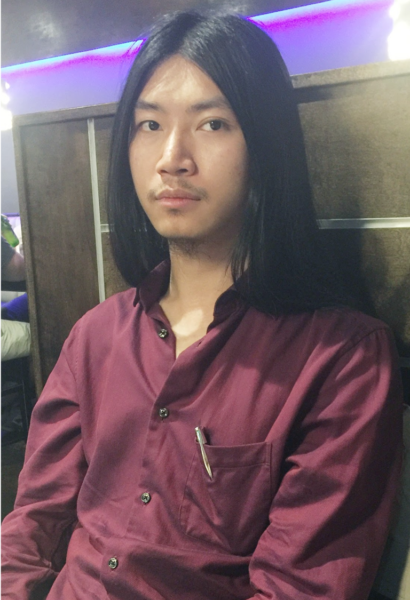 What is your position or role in the DESI project?
What is your position or role in the DESI project?
Having been a DESI member as a graduate student for four years, I became a postdoc at Boston University Physics Department months ago, working on instrument commissioning, primarily the focal plane system.
Where were you born?
I was born and raised by middle-class parents in Tianjin, China, a harbour city next to Beijing. I came to the US in 2009 to attend a liberal arts college hoping to enjoy greater freedom and a more nurturing academic environment. In 2013 I moved to Boston for graduate school, where it has become my second hometown.
Where do you live now?
I have been living in the Boston area for over six years and really enjoying the life here. It is intellectually stimulating and culturally vibrant. The diversity in New England is impressive, always possible to meet people with similar interests or visions. There is a world-class symphony orchestra as well as an abundance of shows of nearly all types. Massachusetts prides itself on carrying the spirit of America from the colonial past through the civil war to the present day, and the New England states have been taking the lead in defining the structural reforms this country needs in order to evolve and stay in the economic, technological, and moral high ground on the world stage. There is also a special sentiment to be found in the nostalgic English names of local towns.
What do you do as part of DESI (both generally and day-to-day activities)?
Over the past four years, I have worked on a variety of things within or related to DESI involving very different skills which all become part of a physicist’s bag of tricks. I started out helping build ProtoDESI at Berkeley Lab, a proof-of-concept focal plane instrument consisting of only 3 fibre positioners. A fibre photometry camera (FPC) was installed at the output ends of the optical fibres in place of spectrographs, and I characterised the FPC and analysed its data after a successful run at KPNO.
Then Boston University’s machine shop (Scientific Instrument Facility, SIF), with its proven track record and unbeatable price, got the contract to fabricate the DESI focal plate structure, on a tight schedule and within micron-level tolerances. My advisor Prof. Steve Ahlen and I worked hard with the machinists to refine the quality of the petals, found the right coating, and measured 100% of the critical dimensions of each petal on a Zeiss CMM with an automated CMM program we developed together with Zeiss.
These focal plane metrology data were instrumental in our later alignment of the focal plate structure, as each petal is machined slightly differently and needs to be individually adjusted when bolted to the integration ring. At the end of the alignment, my colleagues and I achieved around 99.9% projected optical throughput using another CMM at Berkeley Lab, meeting the micron-level precision requirement and science requirement of the project. I was also an active observer for MzLS of the Legacy Surveys.
Having completed and delivered the focal plate structure for integration with the robotic fibre positioners, I started working with Prof. Daniel Eisenstein at the Harvard-Smithsonian Center for Astrophysics on a halo occupation distribution (HOD) forward-modeling project with significant implications for surveys like DESI. This was a terrific opportunity for me to embrace the theoretical and computational side of observational cosmology. We employed high-fidelity N-body cosmological simulations, created a number of mock galaxy catalogues, and determined the systematics due to the HOD parameters assumed in measuring baryon acoustic oscillations (BAO), a key signature in large-scale structure.
Recently I have been working on petal assembly testing, positioner calibration, and essentially software development for instrument control, monitoring, and analysis. My day-to-day activities include attending telecons, coding, running focal plane tests, supporting DESI commissioning tasks, and traveling to KPNO for day and night shifts from time to time.
What is the most interesting or exciting thing about DESI (and/or your job and/or astronomy in general)?
DESI has great potential to make the next big discovery in cosmology and particle physics. 35 million galaxy spectra is an unprecedented order of magnitude for this sort of data, only achievable with the state-of-the-art DESI positioners. It is extremely exciting and fortunate for me to be able to contribute to this project. I don’t have to describe how or why fundamental physics is interesting or exciting. To me DESI is the perfect blend of cosmology, particle physics, and astronomy, and my work has had the right balance between software and hardware.
What do you do for fun?
There is a vast universe of fun to be had in books, music, and films. They not only provide fun, but also make me relax and contemplate. I am also an amateur music producer, racing driver, and lapsed pianist. In the old days I used to be a cyberathlete playing competitive Counter-Strike and e-sports commentator.
